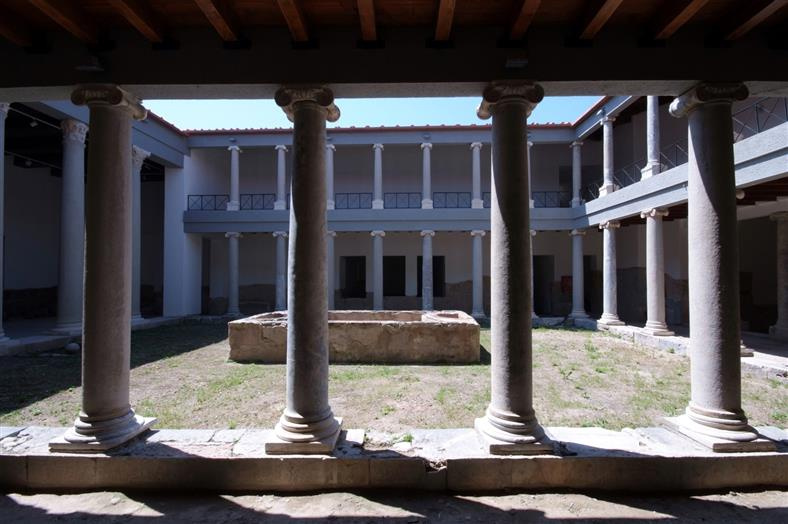
The "Casa Romana", or the Roman Manor is one of the most interesting sites on the island of Kos.
In 1933 the great earthquake nearly destroyed the whole island. The Italians, who at the time of the earthquake were occupying the island, perceived the destruction as an opportunity to reconstruct the city's building plan, conducting numerous excavations, with the knowledge that beneath the leveled structures ancient monuments lay.
Laurenzi, the head archeologist was in charge of the excavation, with the Italian administration of the island conducting a full restoration project that lasted until 1940.
The site is a Roman Manor of the Pompei model, erected between the late 2nd and the early 3rd century A.D. Built on the ruins of an earlier Hellenistic house, with an excellent drainage system, the manor comprises 36 rooms and three atriums.
Its exterior view of the site does not prepare the visitor for what lies within. Walking through the main entrance one only begins to grasp the manor's beauty. There one encounters a statue's base bearing the inscription “ΑΠΕΛΕΞΙΚΑΚΟΣ” (he who repels evil). In the first atrium a small reservoir and a mosaic portraying a panther devouring a deer, of pristine quality, may be found. Nearly every room of the manor features stunning mosaics and beautiful decors. The manor's central room ("ανδρώνας") exhibits signs of orthomarmarosis and bear mosaic floors of geometric ornaments, depictions of tigers panthers and others. The auxiliary rooms are to be found in the northwest side near the stairs leading to the first floor. In every atrium one may find reservoirs of various sizes and mosaics of mythological and physical subjects such as the Niriyds or dolphins. Within the structure statues of nymphs, of Athena and a mosaic depicting the ocean bed can be viewed..
Text Source: www.kos.gr




